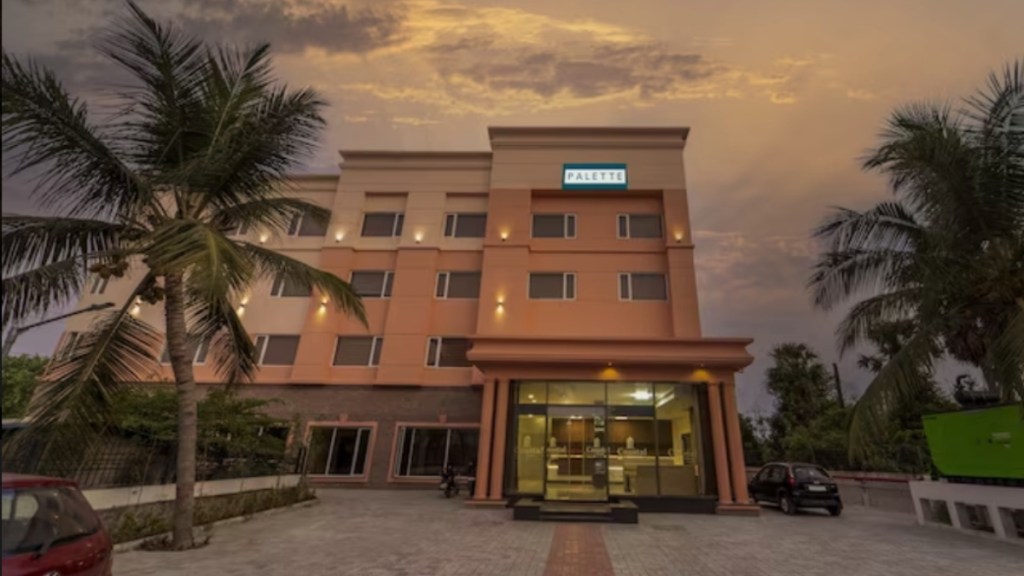Last week, OYO announced its entry into the premium resorts and hotels category with the launch of a new brand, Palette. The average cost per night at a Palette resort will be Rs 3,500 — compared to Rs 400-500 at a regular OYO room — making it the brand’s most premium offering till date. The bookings for Palette can be done via the common OYO app and some online travel agents.
Currently, OYO has three other premium brands —Townhouse (with an average cost per night of Rs 1,500), Capital O (with an average cost per night of Rs 1,200), and Collection O (with an average cost per night of Rs 1,000). “What sets Palette apart from our other premium brands is the location and exclusive focus on relaxing experiences. Palette resorts will be located in popular leisure destinations across India, while also catering to travellers looking for getaways and staycations,” says Anuj Tejpal, chief merchant officer, OYO.
Anand Ramanathan, partner at Deloitte India, highlights the importance of OYO’s move. “The premium segment is generally more profitable than the budget segment because of higher room rates and lower operating costs,” he says. According to a report by CRISIL, Indian hotels in the premium segment enjoyed an average net profit margin of 15% in 2022, while those in the budget segment recorded only 5%.
So the Palette brand has the potential to shore up OYO’s bottom line, say experts. But it’s not going to be a cakewalk. First, the launch of Palette pits OYO directly against some of the step-down offerings from premium chains – such as the lean-luxe brand Ginger from the Indian Hotels Company Ltd (IHCL), in which room rates start at around Rs 2,700 per night.
But a bigger challenge would be breaking away from its budget brand perception. “OYO stands for marginal hotels so Palette from OYO might actually be a liability,” says Sandeep Goyal, managing director, Rediffusion. “As a standalone brand it may actually do better.”
Been there, done that
The first thing a brand looking to climb the ladder of premiumisation must do is make a clean break from the past, says Shashank Srivastava, senior executive officer, marketing and sales at Maruti, which took a considerable amount of time to shake off its middle-of-the-road imagery and establish Nexa as a premium offering. “Maruti was known as a value-for-money brand. To break through the older perception, we created a new brand name and identity with Nexa and ensured that the product stood out more than the showroom. That is what is needed for brands with a budget legacy to break through — a clean break from their erstwhile identity,” he explains.
That clean break involves upgrading touchpoints, revamping infrastructure, training staff, and establishing a brand new standard operating procedure for the premium offering just like what Maruti did, say experts. Srivastava adds that communication also plays a crucial role in rolling out a premium imagery, and thus the messaging signaling such a shift must be sophisticated.
From the looks of it, a dual branding strategy might have worked better for OYO. Says Shoeb Mohammed, director of operations, Courtyard by Marriott, Mumbai, “The positioning of our select service hotels is very clear and never gets diluted, which makes it easy for guests as they know what to expect and that sets us apart.” Nisha Sampath, managing partner at Bright Angles Consulting, cites Nokia. “Nokia’s Vertu is an example of such a brand. However, OYO has chosen to retain its name, which could pose challenges as it attaches the mass brand perception to the new Palette venture,” she says.
Micromax learnt the hard way that roping in an international celebrity doesn’t foster premium imagery or guarantee acceptance.
A good place for OYO to start would be to bring the product up a few notches, get creative where it counts and put quality over quantity, say experts.
Step by step
Average room rates of OYO’s offerings*
Palette Rs 3,500
Townhouse Rs 1,500
Capital O Rs 1,200
Collection O Rs 1,000
OYO Rs 500-600
*Per night


